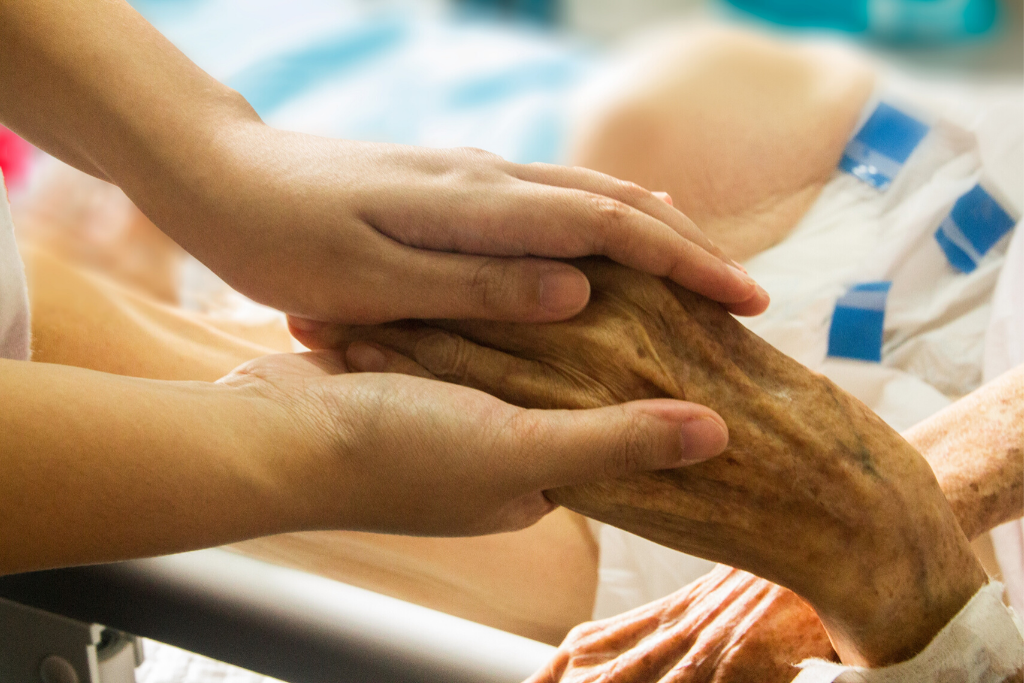As long term care facilities and hospitals fight COVID-19 and care for patients, there is another group of frontline workers providing essential care–home health care workers. Every day, hundreds of thousands of home health care (HHC) workers go into homes to provide vital services for our seniors, homebound, and disabled neighbors. Home health nurses provide nursing care in a patient’s home. The home health nurse’s responsibilities are vast. These nurses must be confident and competent in their skills, possess critical thinking, and be flexible and innovative.
HHC nurses may be licensed practical or vocational nurses or registered nurses with at least one year of clinical experience. LPNs and LVNs typically work as field nurses and perform regular visits on patients. RNs are considered the case manager. They perform the initial assessment on patients and formulate a treatment plan to meet each patient’s needs and goals. Case managers may hold an Associate Degree in Nursing or a Bachelor’s Degree in Nursing. Typically, the Director of Operations is a bachelor prepared registered nurse.
Carrying their own set of skills, these nurses use the nursing process and sharpened assessment skills. They have varied clinical responsibilities:
- Reconciling medication
- Performing wound care
- Providing teachings and training to patients or their family members
- Coordinating care with the patient’s interdisciplinary team
These nurses care for their patients until they are discharged from the agency or reach their prior baseline. During the COVID-19 pandemic, how have home health agencies changed to protect their patients and staff?
Regulatory changes
Guidelines mandate that patients be homebound to qualify for home health care visits. A doctor’s order determines this, usually related to the patient’s health or medical condition. According to the Centers for Medicaid and Medicare Services (CMS), the Trump Administration has issued an array of temporary regulatory waivers and new rules to ensure the American healthcare system is prepared to respond to the COVID-19 pandemic. In response to these regulatory changes, CMS has issued policies that allow patients to be considered homebound if the patient is quarantined due to suspension of being COVID positive or confirmed COVID positive. Adopting these changes allows home health agencies to
- Treat patients at home
- Reduce hospital stays
- Decrease emergency room visits
- Reinforce stay at home advice
All of these measures help lessen the spread of the coronavirus.
Telehealth visits
Entering a stranger’s home to care for them is no easy task, yet home health care nurses do it, daily. Meeting patients in their homes, providing care, and educating them on everything from signs and symptoms of disease exacerbation to how to perform wound care properly is a day-in-the-life of a home health nurse. “Before COVID-19, our patients were like family. Now, we’re dressed out in PPE, as if they’re strangers,” states Lisa Willams BS, LVN — a home health nurse of ten years from Texas.
Limiting the exposure of patients and nurses is essential for home health agencies. Brandon Groover, CEO of Elite Home Health, implemented telehealth visits for patients that qualify. According to CMS, the required face-to-face encounter for home health can be conducted via telehealth.
Policy and procedure changes
Groover states Elite implemented policy and procedure changes early on. “Thankfully, we took swift action as soon as COVID-19 was detected in the US. I ordered tens of thousands of dollars worth of
- N95 masks
- Gowns
- Shoe coverings
- Hand sanitizer
- Gloves
For the most part we have everything we need to protect our staff.”
Mandating temperature checks for all patients upon contact is a policy Elite implemented. Groover told us, “We are utilizing universal precautions and treating all patients and staff as if they have been exposed to COVID-19.”
Because of the rise of COVID-19 many facilities stopped elective surgeries. Groover states this caused a decrease in his agency’s patient caseload. To keep his staff employed and provide the community with PPE, he ordered over tens of thousands of civilian masks and had his staff pack and ship or deliver the masks. “I was glad to be able to keep my clinicians employed,” he stated.
Personal Protective Equipment (PPE)
Based on CDC guidelines, the National Association for Home Care and Hospice (NAHC) advises home health clinicians to:
- Wear masks, preferably a surgical mask, when in contact with any patient
- Don a N95 with COVID positive patients
- Wear isolation gowns with suspected or positive COVID-19 patients
- Remove gowns before leaving the home and take to a designated dropoff location, at the end of each workday
- Advise all patients, regardless of COVID-19 status, to wear a cloth mask during the home health care workers’ visits
- Wear gloves during all patient encounters when a patient is suspected or confirmed COVID positive or when state-mandated
When caring for a patient who is not suspected or confirmed COVID‐19 –to conserve gloves– the NAHC is suggesting that gloves only be worn when
- There is a potential for exposure to a patient’s blood and body fluids
- Required by state regulations
- Required by a disinfectant manufacturer when disinfecting equipment after use.
Groover states that Elite Home Health mandates their clinicians wear N95 masks and gloves with all patient interaction.
What else can home health nurses do?
Education and training is a normal part of a home health nurse’s job. A day in the life of a home health nurse consists of educating or teaching patients and their family members on disease processes, signs and symptoms, and prevention. During a global pandemic, things have not changed.
Home health nurses should provide infection control and prevention education to patients and their families. This education should include training on:
- Proper handwashing
- Sanitation and disinfection guidelines for surfaces in the home and laundry
- Signs and symptoms of COVID-19
- When to call the agency when there is a suspected case in the home
Agencies should make handouts, brochures, and other reading material available for their nurses to provide to their patients. Groover states, “I am constantly watching Federal, State, and local press conferences. CMS, AHCA (American Health Care Association), and the CDC are constantly providing news and data updates. Typically, I send the staff a COVID-19 memo via texts as pertinent information becomes available.”
Nurses should also prioritize their schedules. Marie Grosh, a nurse practitioner in Cleveland, told Kaiser Health News that she shifts her schedule to see patients with communicable diseases at the end of her shift to reduce infection risks to others.
 Portia Wofford is a nurse, writer, content manager, and nurse consultant. Spending her nursing career creating content and solutions for employers that affected patient outcomes, these days Wofford strives to empower nurses by offering resources for mental wellbeing–while helping healthcare organizations and entrepreneurs create engaging content that connects and converts. Follow her on Instagram and Twitter for her latest.
Portia Wofford is a nurse, writer, content manager, and nurse consultant. Spending her nursing career creating content and solutions for employers that affected patient outcomes, these days Wofford strives to empower nurses by offering resources for mental wellbeing–while helping healthcare organizations and entrepreneurs create engaging content that connects and converts. Follow her on Instagram and Twitter for her latest.
This article was updated in October 2024.

